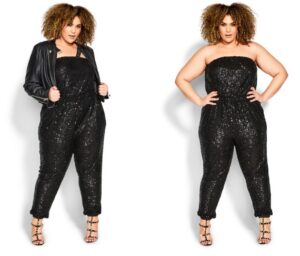Wear protective eyewear and use minimal clothing while tanning in a tanning bed. Tanning beds are a popular way for people to achieve a tan year-round without being outdoor under.
While tanning beds can help people get a bronzed glow, it’s essential to take precautions and understand what to wear while tanning. Tanning beds emit uv radiation, which can cause skin damage, eye problems, and skin cancer. So, it’s crucial to know how to protect yourself while achieving the perfect tan.
In this article, we will cover some essential advice on what to wear in a tanning bed, how to protect your skin, and what precautions you must take to remain safe in a tanning bed.

Credit: www.cdc.gov
Understanding The Risks Of Tanning Bed
As the sun-kissed look remains popular, you might be tempted to visit a tanning bed before the summer hits. However, before you do so, you should understand the risks that come with indoor tanning.
The Dangers Associated With Uv Exposure
It does not matter whether you choose a tanning bed or expose yourself to the sun because they both increase the risks of skin cancer. The world health organization labels indoor tanning as a group 1 carcinogen, the same as tobacco smoking and asbestos.
Here are other dangers associated with uv exposure:
- Premature aging of the skin
- Sunburn
- Eye damage
- Immune system suppression
The Impact Of Indoor Tanning On Skin Health
Do you know that indoor tanning is not a safe alternative to natural tanning? In fact, dermatologists warn that the effects on your skin could be worse. Here are some impacts of indoor tanning on skin health you should know:
- Increased risk of developing skin cancer
- Dry, itchy, and peeling skin
- Appearance of age spots, wrinkles, and fine lines
Understanding The Concept Of Skin Type And Its Relation To Tanning
Your skin type affects how you react to uv rays, and consequentially, your tanning. So, before you decide to lounge on the tanning bed, here’s what you need to know about the concept of skin type:
- There are four types of skin – type 1, 2, 3, and 4, and each type reacts differently to sun exposure.
- Knowing your skin type will enable you to take necessary precautions when tanning
- People with skin type 1 and 2 should avoid both indoor tanning and excessive sun exposure as they are at high risk of sunburn and skin cancer.
Indoor tanning may seem like a quick fix for a sun-kissed look, but its harms outweigh its potential benefits. Therefore, you should embrace your natural skin tone, protect your skin from the sun and love the skin you are in.
Choosing Appropriate Clothing For Tanning Bed
Tanning is a great way to get a bronzed look for the summer. However, it’s not just about lying on the bed and waiting for the magic to happen. Choosing the right clothes is vital to achieve the perfect tan while keeping your skin safe.
Here’s what you need to know:
The Importance Of Covering The Right Body Parts
It’s essential to cover your body correctly while tanning to avoid uneven skin tone and sun damage. Here are the key points to consider:
- Wear clothing that covers your sensitive areas. Use a bandeau top or a strapless bikini top to avoid tan lines on the shoulders.
- If you want to tan your legs, go for a bikini bottom or a swimsuit with high cuts. These will make your legs look longer and give them a deeper tan.
- Protect your face, especially if you have sensitive skin. Consider wearing a wide-brimmed hat or use a tanning lotion with a broad-spectrum spf.
The Ideal Fabric And Material For Tanning Clothes
The right choice of tanning clothes will not only make you look good but also help you achieve the perfect tan. Here are some useful tips:
- Opt for loose-fitting, lightweight clothing. Tight clothes can leave marks on your skin, and polyester or nylon fabric can prevent proper airflow.
- Choose linen, cotton, or rayon clothing, as these materials let your skin breathe properly.
- Avoid dark-colored clothing, as they can absorb the heat and make you uncomfortable.
Avoiding Clothing That Can Leave An Impression Or Mark On The Skin
Making sure that your choice of clothing doesn’t leave any marks is just as crucial as the right fabric. Here’s what you need to keep in mind:
- Avoid clothes with rough seams, buttons, or zippers. They can leave marks on your skin, ruining your even tan.
- Do not wear tight clothes that can dig into your skin. For instance, tight socks or elastic waistbands can leave indentations on your skin.
- Take extra care to avoid marks on sensitive areas like your breasts, hips and stomach.
With these tips in mind, you’ll be set to achieve a perfect tanned body this summer without the worry of unwanted marks or uneven skin tones. So, choose the right clothing, take care of your skin, and enjoy the sun-kissed glow!
Best Accessories To Wear In A Tanning Bed
Significance Of Eye Protection And The Ideal Type Of Goggles:
Indoor tanning can be dangerous for the eyes due to the high amounts of uv radiation. Exposing the eyes to uv radiation harms the retina and leads to cataract formation. It can also cause eye irritation, redness and increased sensitivity to harsh light.
Therefore, it is crucial that you find the right eye protection to wear when tanning indoor.
The ideal forms of goggles are those that are specifically made for indoor tanning. They are designed to offer maximum protection for the eyes, which is essential. Below are the things to consider when choosing the ideal type of goggles:
- Uv protection capability: Ensure you choose goggles that provide 100% protection against uv lights.
- Comfort: Choose goggles that are comfortable to wear and do not pinch your nose or press against the eyes.
- Durability: Select goggles that are made with high-quality materials and that you can use for an extended period.
Wearing Indoor Tanning Lotion And The Appropriate Application:
For an even skin tone during tanning, it is essential to apply indoor tanning lotion. Tanning lotion can minimize streaking and spotting as well as keep your skin moisturized. It also makes your tan last longer. Here are the steps on how to apply indoor tanning lotion:
- Exfoliate: Before application, make sure you exfoliate your skin to get rid of dead skin cells.
- Pick a quality tanning lotion: Choose a tanning lotion specifically meant for indoor tanning.
- Apply the lotion: Apply the lotion evenly, starting with your legs and working up. Be sure not to miss any spots.
- Let it soak: Wait for a few minutes before entering the tanning bed to give the lotion enough time to soak in.
- Apply lotion after tanning: After the tanning session, apply a moisturizing lotion to preserve your skin.
Additional Tips To Protect Hair And Lips During Tanning:
When tanning, it is essential to protect the hair and lips to prevent damage from the uv radiation. Here are some tips on how to protect your hair and lips when tanning:
- Tuck your hair: Braid your hair or tuck it into a cap to prevent it from getting damaged by the uv rays.
- Use lip balm: Use a lip balm that has spf and apply it to your lips to protect them from getting dry and chapped.
- Avoid cosmetics: Do not use make-up or any cosmetic products when going into a tanning bed. Some of the ingredients in these products can cause damage from uv radiation.
Remember that you should always follow these tips when tanning indoors to protect yourself from excessive uv radiation and achieve an even tan.
What Not To Wear In A Tanning Bed
What to wear in a tanning bed: what not to wear in a tanning bed
If you’re getting ready for a tanning session, choosing the right clothing is just as important as your tanning lotion. Wearing the wrong clothes could put your health at risk or even damage your clothes. Here’s what not to wear in a tanning bed.
Avoiding Jewelry And Makeup
As tempting as it may be to glam up for a tanning session, wearing jewelry or makeup in the tanning bed can result in serious burns or irritation. Here are a few things you should consider:
- Remove all jewelry, including any lip or nose rings, before tanning
- Avoid wearing makeup, especially foundation, powder, or any products that are oil-based
- If you’re hesitant to go bare-faced, opt for a tinted sunscreen to protect your skin from uv rays and give you a bronzed look
The Risks Associated With Wearing Synthetic Fabrics
While synthetic fabrics may be comfortable to wear, they could pose a danger when exposed to heat. Here are some risks you could face:
- Wearing synthetic materials could result in burns, as they can catch on fire easily when exposed to heat
- Synthetic fabrics can also melt and damage the tanning bed, thus costing you more money in repairs
The Specific Types Of Clothing Items To Avoid During A Tanning Session
Certain types of clothing can cause irritation, burns, or even stains on your skin. Here are some clothing items to leave out of your tanning outfit:
- Tight-fitting clothes can cause skin irritation and may leave tan lines
- Clothes with metal buttons or zippers can get hot and cause burns
- Clothes made of silk or wool could stain your skin or the tanning bed
- White or light-colored clothes could reflect light and make it harder for the tan to develop
Wearing the right clothes is essential for a successful tanning session. Avoiding jewelry and makeup, synthetic fabrics, and certain clothing types can save you from burns, irritation, and costly damages. Stay aware and wear clothes that are both safe and comfortable for the ultimate tanning experience.
Maintaining Skin Health After Tanning
The Importance Of After-Tanning Care And Moisturizing
After tanning, your skin can be dry and prone to damage due to the uv exposure. Therefore, it is crucial to follow a skincare routine that helps maintain your skin’s health and glow. Here are some key points to keep in mind:
- Moisturize your skin immediately after tanning: This will help restore the hydration levels of your skin, which have been lost due to the tanning process. Make sure to use a gentle, fragrance-free moisturizer, which won’t irritate your skin.
- Keep your skin cool: Take a cool shower or use a cold compress on your skin to soothe any inflammation. Don’t use hot water on your skin as it can further dry it out.
- Stay hydrated: Drink plenty of water to nourish your skin from the inside out.
- Avoid harsh chemicals: Don’t use products containing alcohol or acids, such as salicylic, glycolic, or retinol, on your skin immediately after tanning. They can dry out and irritate your skin, leading to further damage.
- Protect your skin: Use a broad-spectrum sunscreen with at least spf 30 to protect your skin from harmful uv rays.
Understanding The Potential Risks Of Sunburn Post-Tanning
Sunburn is a common occurrence after tanning and can cause significant damage to your skin in the long run. Here are some potential risks of sunburn that you should be aware of:
- Skin irritation: Sunburn can cause your skin to become red, itchy, and painful. It can also cause blisters, swelling, and peeling.
- Increased risk of skin cancer: Prolonged exposure to uv radiation can increase the risk of skin cancer. Sunburns can double or even triple the risk of melanoma, the deadliest form of skin cancer.
- Premature aging: Sunburn can cause premature aging of your skin, including wrinkles, age spots, and dryness.
Tips For Prolonging The Effects Of A Tan While Minimizing The Risks To Skin Health
While tanning can add a healthy glow to your skin, it’s essential to minimize the risks to your skin’s health. Here are some tips for prolonging the effects of your tan while taking care of your skin:
- Gradual exposure: Start with short tanning sessions and gradually increase the time you spend in a tanning bed. This will minimize the risk of sunburn and give your skin time to adapt to uv exposure.
- Use a tanning accelerator lotion: Tanning accelerators contain ingredients that help your skin produce more melanin, the pigment responsible for your skin’s color. They can help you achieve a tan faster while reducing sunburn risk.
- Take breaks: Take frequent breaks during your tanning session to give your skin time to cool down and moisturize it.
- Avoid overexposure: Don’t overexpose yourself to uv radiation. Limit your tanning sessions to a maximum of three times per week.
- Opt for self-tanning products: If you want to avoid uv radiation altogether, opt for self-tanning products. They are a safer alternative and can give you a natural-looking tan without the risks associated with tanning beds.
Remember, maintaining healthy skin is crucial for a long-lasting tan. Follow these tips, take care of your skin, and enjoy the benefits of your beautifully sun-kissed glow.
Frequently Asked Questions Of What To Wear In A Tanning Bed
Q: What Should I Wear In A Tanning Bed?
A: it’s best to wear minimal clothing. Women may wear a bikini, while men can wear underwear. Avoid wearing jewelry or clothing made of metal.
Q: Can I Wear Sunscreen In A Tanning Bed?
A: no, you should not wear sunscreen in a tanning bed. Sunscreen can hinder the tanning process, and in some cases can even damage the tanning bed’s acrylic surface.
Q: Are There Any Clothing Materials I Should Avoid?
A: yes, avoid wearing clothing made of synthetic materials, such as nylon or polyester. These materials can melt and stick to the skin due to the heat of the tanning bed.
Q: Will Tanning Nude Give Better Results?
A: tanning nude will not give you better results. In fact, it can increase the risk of burns and skin damage, as well as raise sanitary concerns.
Q: Can I Wear Contact Lenses In A Tanning Bed?
A: no, it’s not recommended to wear contact lenses in a tanning bed. The heat and uv radiation can cause eye irritation. It’s best to wear sunglasses to protect your eyes.
Conclusion
Now that you have a comprehensive idea about what to wear in tanning beds, you can confidently protect your skin from uv exposure. Whether you choose to wear a swimsuit or go naked, always remember to put safety first. Covering your sensitive areas like your face, hands, and feet can prevent burns and skin damage.
Choosing the right tanning bed clothing also helps in achieving the desired tan result while keeping you comfortable. Opt for dark, loose-fitting clothes to avoid stains and provide air circulation. Above all else, remember to apply sunscreen to protect your skin from harmful uv rays.
With these dressing tips and safety precautions, step into your tanning bed with confidence and get a beautiful, healthy glow.




